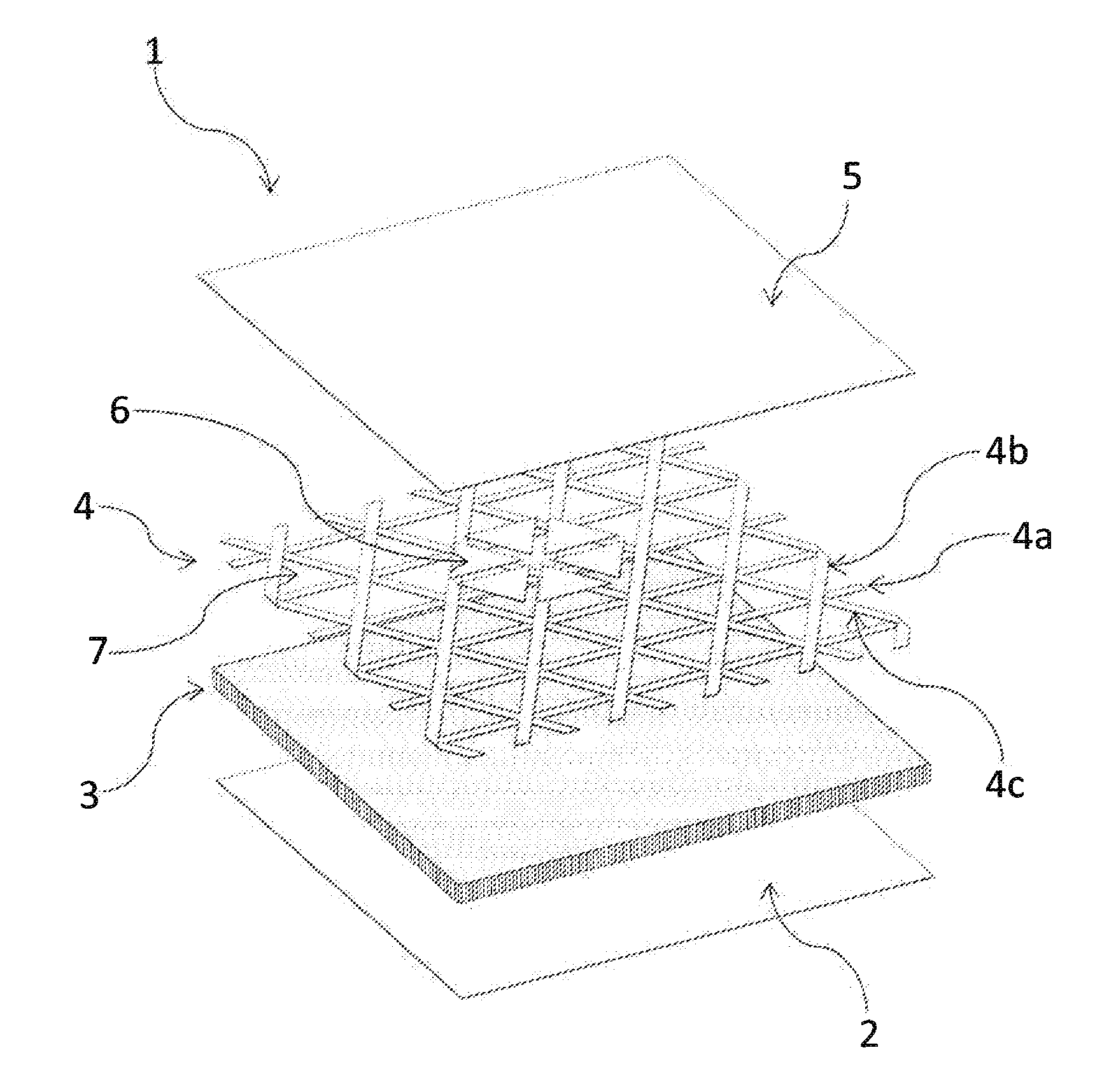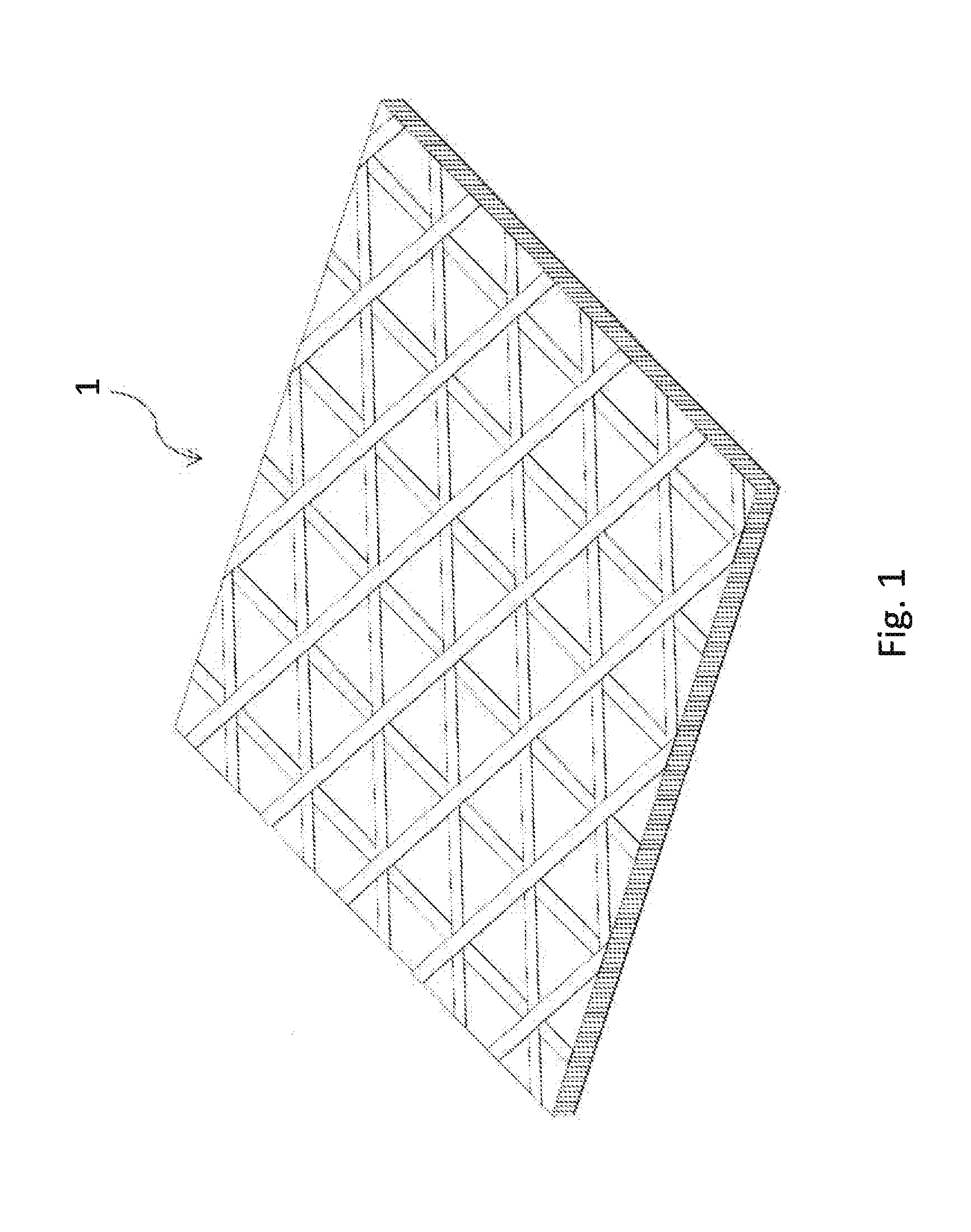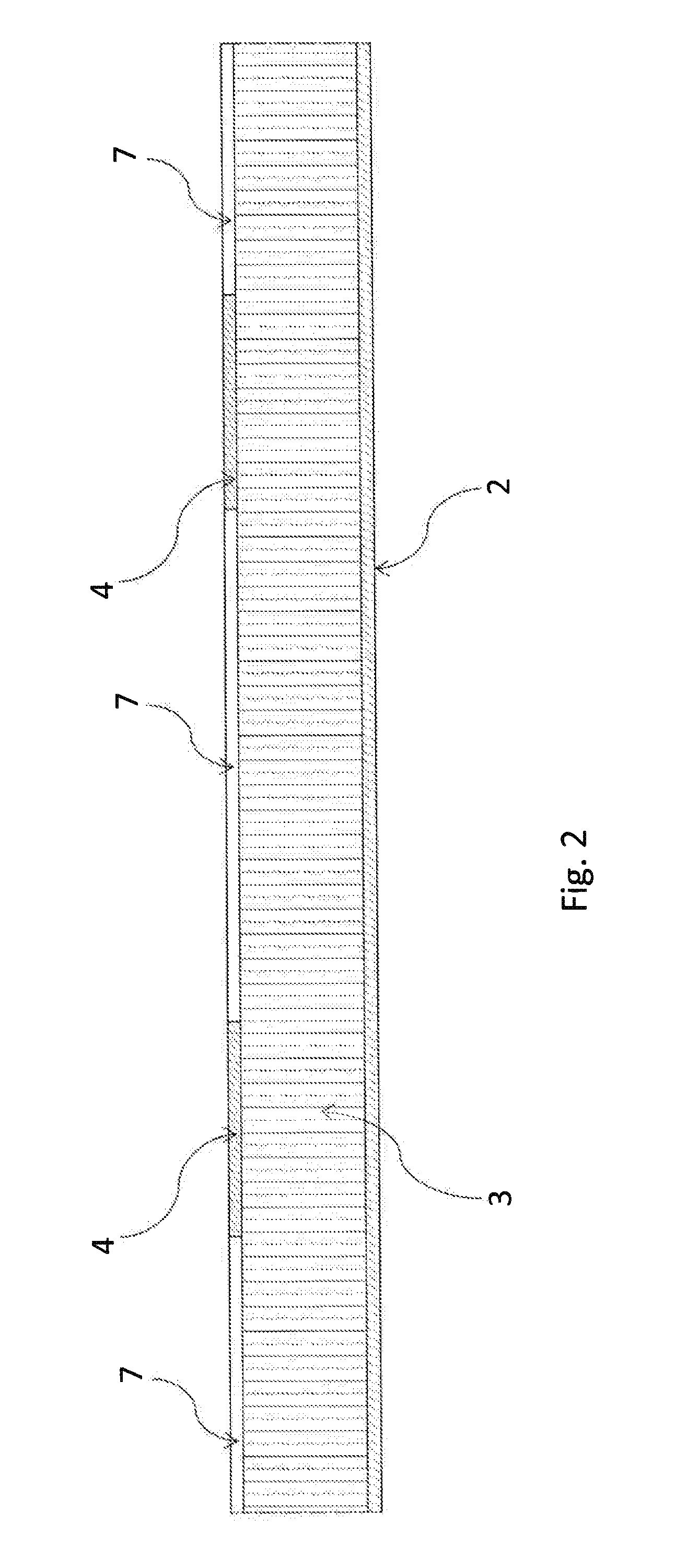Reaching an
optimal weight efficiency of composite sandwich panels or shells is often limited by a minimum feasible cover
skin thickness which is a function of the minimum available ply thickness and a laminate lay-up configuration, often tailored to be more or less isotropic.
Moreover, the
damage tolerance of typical composite sandwich panels is known to have the risk of delaminations propagating all along the continuous core /
skin interface.
The acoustic damping behavior of typical composite sandwich panels is known to be insufficient.
Some main disadvantages are related to those typical arrangements of composite sandwich panels:
Too small cover sheet thicknesses reduce however the strength-to-weight ratio—especially when using
honeycomb cores—as well as the
damage tolerance capabilities.
Too
large core thicknesses still further reduce the strength capabilities of the cover sheets, especially for
honeycomb cores.
Here, the maximum weight efficiency of a sandwich design often cannot be exploited due to the limitations imposed by the minimum feasible thickness of the cover sheets.
The damage resistance and the
damage tolerance of sandwich panels with continuous cover sheets are deficient.
The possibilities offered by automatic processes like Automatic
Fiber Placement are not fully exploited when focusing on standard sandwich arrangements.
The
high stiffness-to-weight ratio of sandwich panels imparts superior
noise transmission and hence a deficient
noise insulation capability.
The acoustic damping behavior of typical sandwich arrangements is deficient, hence leading to
low transmission loss factors.
The manufacturing of those skins is only feasible with winding techniques using a separate pre-curing of the skins.
A co-curing process of these composite sandwich panels of the state of the art, i.e. simultaneous curing of both
sandwich panel skins with the core, would not be suitable, since large “telegraphing” would develop hence leading to a considerable performance reduction of these composite sandwich panels of the state of the art.
Moreover, a local tailoring of the mesh of these composite sandwich panels of the state of the art is only feasible by locally adding extra plies.
Grid structures tend to be more effective in-plane and less effective out-of-plane in terms of stiffness in comparison to sandwich structures.
Such a
skin tends however to buckle at relatively
low load levels and adds additional structural weight.
Typical grid designs are not compatible with conventional
fiber placement techniques.
Typical grid designs have crossing stiffeners with a rectangular cross section hence leading to a considerable excess of material within the intersections points leading either to excessive
fiber volume fractions or to an unacceptable bulge formation at the intersection points.
Winded grids do not allow for a local change of the stiffeners cross-section.
The implementation of an additional skin is not easy, since there is an excess of material on each intersecting point of the intercrossing strips which leads to a variation in total panel thickness.
The placement of material within cavities is not necessarily suitable for conventional automatic
fiber placement processes.
Moreover, the opened and free-standing sides of the
honeycomb core are susceptible to environmental effects.
The honeycomb lattice arrangement requires intensive milling operations.
This requirement leads to difficult handling characteristics.
Hence, that design is considered not suitable for automatic lay-up processes.
The
noise damping behavior of this composite sandwich lattice structure of the state of the art is not improved.
The implementation of additional damping mechanisms is not possible.
The design of this composite sandwich lattice structure of the state of the art is not suitable for structural shells enclosing a
fuel tank region due to the numerous cavities of the opened lattice design.
Honeycombs as core materials are not addressed because they are not optimal in terms of heat and
noise isolation.
This, again, shows that there is no mechanical, load-bearing link intended and realized between the meshed element and the flexible foil, as would be the case in a sandwich construction: the small surface of a rod is not enough to provide for a stiff link and the mechanical interaction to the core is poor.
Moreover, the bi-axiality of the mesh does not provide for sufficient in-plane
shear stiffness, which is necessary for a
structural element for aircraft applications.
 Login to View More
Login to View More 


